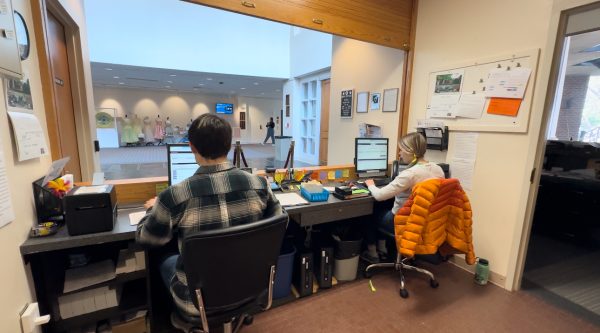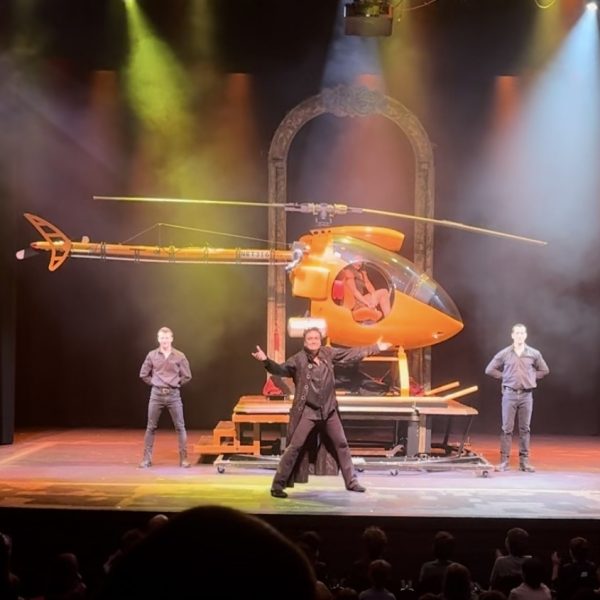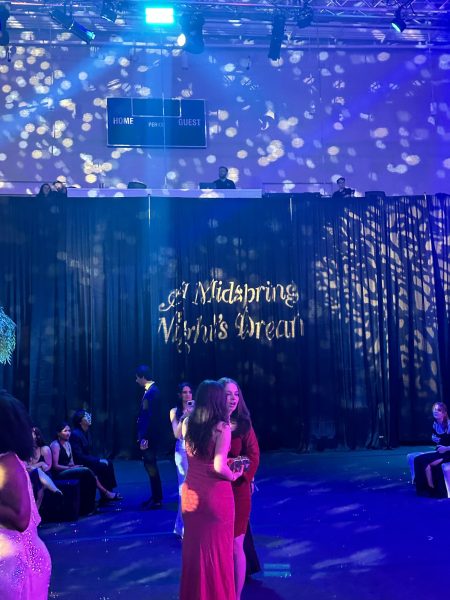DCI Class Presents Snapshots of University History
These include a look into the 1954 football cheating scandal, W&L’s secret societies, and famous musical guests
December 14, 2021
On Thursday, Dec. 9, students from DCI 201: Digital Collection & Exhibits went to the Harte Center to discuss the results of their investigations into Washington and Lee’s institutional history.
Over the course of fall semester, nine students explored the university’s past through three topics: the 1954 football scandal, secret societies on campus and performances by musical guests. Students reviewed materials from the University Library and Special Collections as they researched their topics, and worked with library staff to curate primary sources
Thursday’s presentation acted as the capstone for the course, where students reported on their research and showed off the digital exhibitions they created.
The exhibits are hosted on the Omeka S platform, a digital platform for cultural institutions used by Special Collections. K.T. Vaughn, university librarian, and Lynn Rainville, director of institutional history, and other library staff attended. They were given the chance to pose follow-up questions to the students.
The football exhibit reviews the history of football at the university, comparing before and after the 1954 cheating scandal.
Washington and Lee’s first coordinated football program began in 1873, before going on to become a founding member of the Southern Conference. Playing in the 1951 Gator Bowl was the peak of the university’s football prestige. It was the only bowl game in which the university played.
In 1954, 12 football players, out of 14 accused athletes, were found guilty of cheating on academic tests and involvement in acts such as bribery. They were expelled in what the site describes as “one of the greatest threats to the university’s honor system,” and the entire football program was suspended. In the aftermath, football lost its funding and DI status. Following the football team’s suspension, Washington and Lee has been a DIII school. Since 1976, the program has competed in the ODAC conference.
This year, the Generals won eight of 10 games – a fact that Riley Parker, ’23, believes makes the history even more important to investigate.
“Nearly a third of our undergrads are student-athletes, and I think it’s valuable to know the full story of our university’s athletic highs and lows,” Parker said.
The presentation of the exhibit stated that the history of the football team is a parallel history of Washington and Lee’s commitment to personal integrity.
The secret society exhibit seeks to “broaden public knowledge of what secret societies are and their existence at Washington and Lee University,” according to the exhibit home page. The exhibit takes a chronological look at the history of such organizations at Washington and Lee, going back to the turn of the 20th century.
Such groups included the White Friars or Sigma Society, names that may be less familiar to current students and staff. As per a survey carried out by this group, the Cadaver Society is by far the most commonly known secret society today, and the exhibit chronicles the decline of other secret societies in the face of Cadaver Society’s ubiquity.
The site is broken into three time periods, pre-1950s, 1950s-2000, and 2000-present. The division mirrors the impact of the Cadaver Society. Their founding in the 1950s marked a turning point in the decline of other secret societies on campus, an impact only matched by the technological turn of the new millenium.
Hunter Hawk, ’23, reflected on the cross-historical perspective of looking at both archives and up-to-date surveys.
“[My] favorite part about working on the project was reading through all Ring-Tum Phi articles seeing how the societies were portrayed in the past versus today,” Hawk said.
The music exhibit explored the variety of music groups that have come to Washington and Lee over the years. Alex Brown, ’23, discussed his groups’ reasons for choosing the topic.
“Music is a very universal topic,” Brown said. “Not everyone likes the same type of music… but it’s something we can all relate to.”
The exhibit was originally conceived as a review of the musical ensembles on campus, but it morphed into a survey of professional artists who have come to campus. These visitors include such famous names as Duke Elligton, who came for the 1961 Fancy Dress. The group reviewed how popular a genre of music or an artist was when they came to campus. Georgie Gaines, ’22, explained their findings.
“In some cases [Washington and Lee was] a little behind the times, but for the most part they were on trend,” Gaines said.
The group asserted that the changing attitudes of the student body can be seen through the types of performers who were invited. The group suggested that there was a particular tension in the history of inviting artists of color to perform while still unintegrated, and even post racial integration.
In the 90s and today, there remains a gap between the intended audience of some performers, particularly Black rappers, and the audience that the university provides. Some current students may recall an instance of this happening on campus after a performance by the artist Jeremih, and following conversations about the lines between appreciation and appropriation.
The fact that students could pick their own topics was essential to Professor Paula Kiser, allowing students to follow their passions and get in depth with a subject.
“[This course was] a nice combination of public history, doing research, writing for a wide audience… and pairing it with learning a new technology,” she said.
The presentations were students’ opportunity to “speak about their projects collectively… to describe, using their words, why they did what they did,” she said.
“Making digital collections and exhibits is fun,” she said, adding that she hopes that the class inspired a fondness or passion for the digital humanities in her students.












